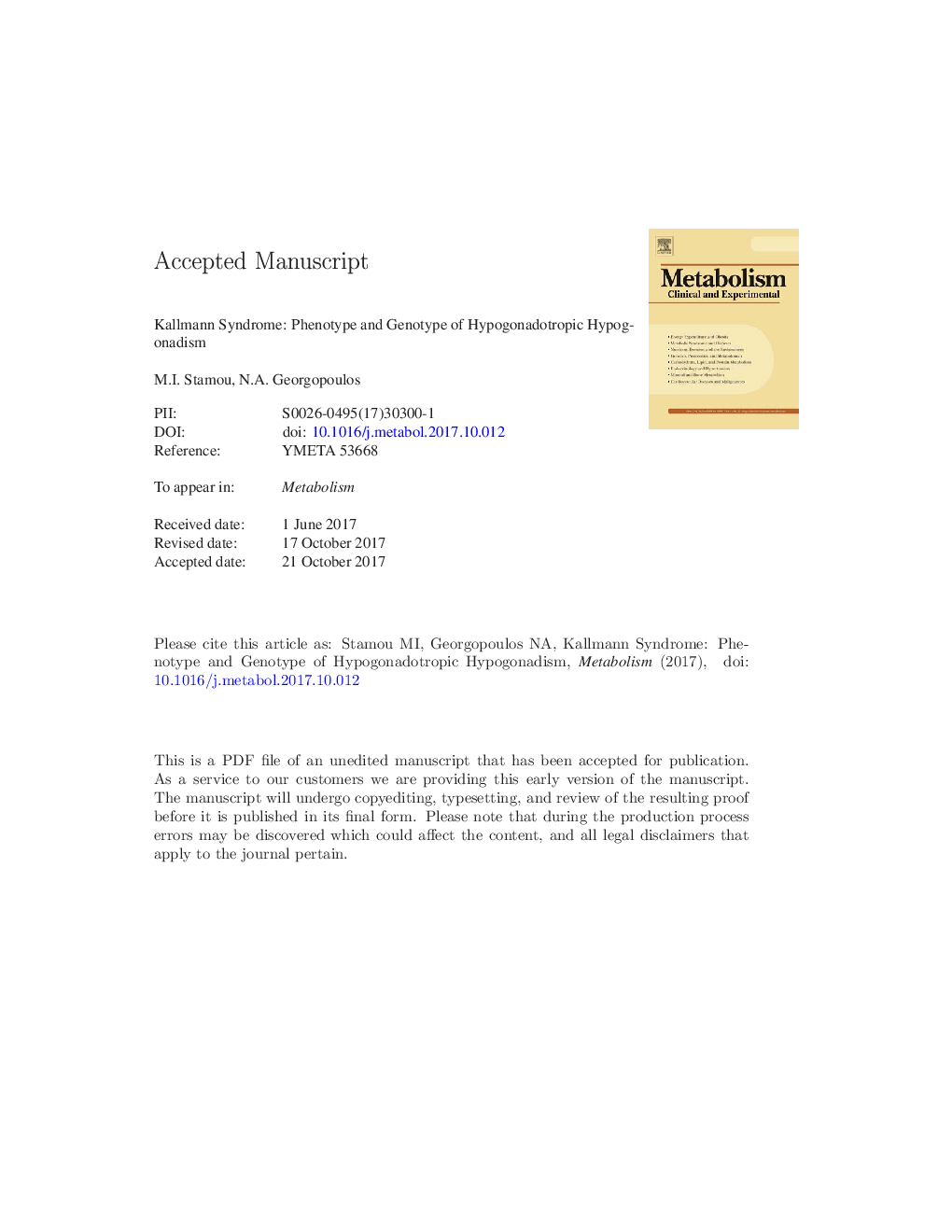| Article ID | Journal | Published Year | Pages | File Type |
|---|---|---|---|---|
| 8632850 | Metabolism | 2018 | 34 Pages |
Abstract
The clinical spectrum of IGD includes a variety of disorders including Kallmann Syndrome (KS), i.e. hypogonadotropic hypogonadism with anosmia, and its normosmic variation normosmic idiopathic hypogonadotropic hypogonadism (nIHH), which represent the most severe aspects of the disorder. Apart from these disorders, there are also “milder” and more common reproductive diseases associated with IGD, including hypothalamic amenorrhea (HA), constitutional delay of puberty (CDP) and adult-onset hypogonadotropic hypogonadism (AHH). Interestingly, neurodeveloplmental genes are associated with the KS form of IGD, due to the topographical link between the GnRH neurons and the olfactory placode. On the other hand, neuroendocrine genes are mostly linked to nIHH. However, a great deal of clinical and genetic overlap characterizes the spectrum of the IGD disorders. IGD is also characterized by a wide variety of non-reproductive features, including midline facial defects such as cleft lip and/or palate, renal agenesis, short metacarpals and other bone abnormalities, hearing loss, synkinesia, eye movement abnormalities, poor balance due to cerebellar ataxia, etc. Therefore, genetic screening should be offered in patients with IGD, as it can provide valuable information for genetic counseling and further understanding of IGD.
Keywords
Related Topics
Life Sciences
Biochemistry, Genetics and Molecular Biology
Endocrinology
Authors
Maria I. Stamou, Neoklis A. Georgopoulos,
